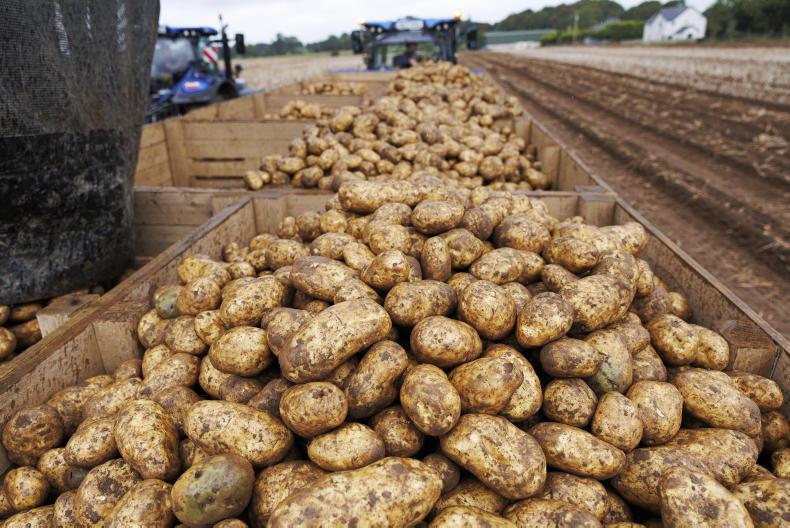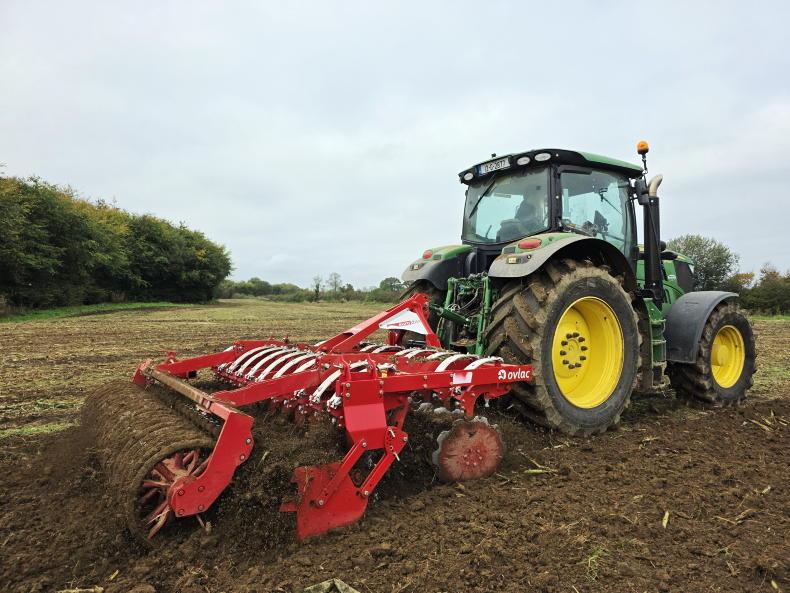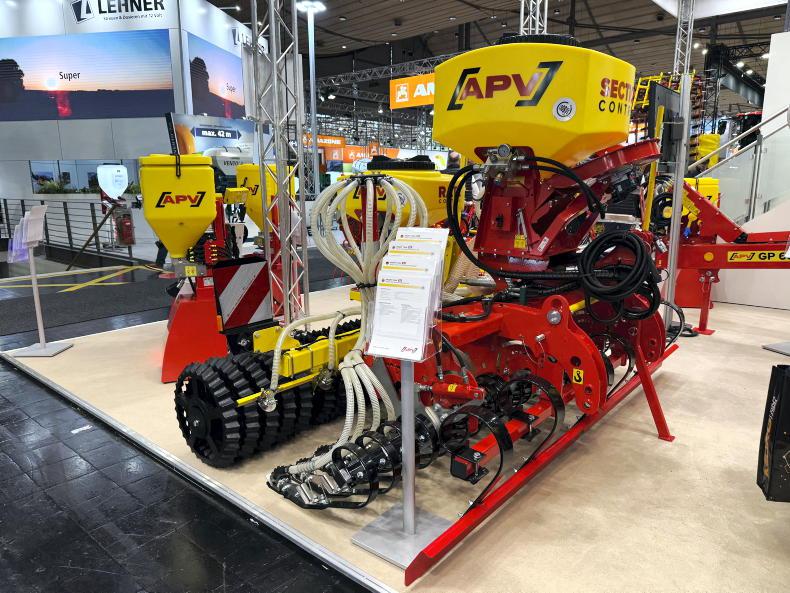Clover has seen a resurgence in popularity this year and with little sign of fertiliser prices falling, farmers reseeding grass this autumn should seize the opportunity to get clover established.
Outlined here are 10 tips to getting clover successfully established.
1 How late can I sow clover in autumn?
There is no one simple answer to fit all farms as geographic location, aspect, soil type and weather will have an impact. But as a rule of thumb, on heavier, north-facing fields and farms in the northern half of the country, target the first week of September as a cut-off point for reseeding.
For lighter, south-facing fields and farms in the southern half of the country, target the second to third week in September, weather depending.
The earlier clover and grass is sown in autumn, the better. This gives more time for seedlings to emerge and a higher ground cover going into the winter, which increases frost tolerance.
2 Choose your field carefully
Clover, and in particular red clover, does not like growing in wet conditions, so choose your fields carefully.
Clover is more likely to persist in free-draining fields. White clover will still grow in heavier soils, but persistency will be an issue.
Graze carefully to avoid poaching and keep field drains maintained.
When reseeding, do not sow red clover directly after red clover, as there is an increased risk of plants dying back with sclerotinia.
3 Should I go for white clover or red clover?
White clover and red clover are two very different plants. Both are high in protein but the management differs.
White clover tillers out along the soil surface as stolons, so it is much better suited to grazing. But this means it needs ryegrass to be repeatedly grazed tight to let clover access sunlight.
Red clover grows tall and erect from a crown about 3cm to 4cm above the ground and therefore suits silage swards.
Red clover can be grazed. But do so in 24-hour breaks and leave a residual cover of 6cm to 8cm to stop the crown of the plant being damaged.
If you have always struggled to grow and maintain white clover in the past, then red clover is probably not the way to go unless grassland management is transformed.
4 Choose the right clover for the job
White clover is classified by leaf size, with small-, medium- and large-leaf varieties, and they are all suited to different roles.
Small-leaf clovers have the highest stolon (tillering) density, making them ideal to the selective grazing nature of sheep. However, small-leaf clovers tend to be lower-yielding.
Large-leaf clovers are essential for silage swards as they are better equipped to compete for sunlight with tetraploid ryegrasses
Medium-leaf clovers, and to a lesser extent large-leaf clovers, are better suited to cattle grazing. Intensive grazing by sheep will see clover content falling and disappear over a couple of years.
Large-leaf clovers are essential for silage swards as they are better equipped to compete for sunlight with tetraploid ryegrasses. They are also higher yielding than small- and medium-leaf varieties.
5 Get lime, P and K into the seedbed
A reseed will not last any length of time without addressing soil fertility beforehand. Spread lime, phosphate (P) and potash (K) before reseeding and incorporate into the seed bed, rather than leaving on the soil surface.
Soil sampling in midsummer is not ideal, as fertility levels will be distorted from grazing animals excreting nutrients, as well as fertiliser dressings over the season.
Assume low fertility and apply lime, P and K, then soil test in winter.
6 Soil contact is crucial
Getting good soil-to-seed contact is crucial for clover. So if stitching in clover seeds, a light run with a disc can increase the level of tilth in the seed bed.
Also, if stitching in clover, make sure the old sward has been burned off and grazed to remove as much trash as possible.
Again, this increases soil contact for seeds.
Liming soils before reseeding stops this dead grass making the seedbed acidic.
7 Do not bury the seed when drilling
Clover produces tiny seeds. As the seed is small, do not bury it too deep when drilling.
Ideally, drill to a depth of 5mm to 6mm and no deeper than 10mm to get the best establishment possible.
A firm seedbed is crucial to prevent clover seeds being buried too deep.
Roll before drilling, if necessary, to tighten cultivated soils.
Finally, fill the seed drill in the field. Filling seed in the yard, then driving to the field will see clover seeds vibrate to the bottom of the hopper, resulting in an uneven reseed.
8 Weed control
The availability of clover-safe sprays is an issue when controlling weeds post-emergence, although weed control is less challenging in autumn reseeding than in spring reseeding.
Ploughing and leaving a stale seed is not practical for an autumn reseed, given the timeframe to get new grass established.
Burning off an old sward and stitching in grass will greatly reduce the weed burden compared to ploughing. Mob-grazing can also reduce weeds.
9 Graze and rest over winter
Once the new sward has established, a short intensive grazing with weanlings, lambs or sheep will reduce the sward cover going into the winter.
Clover needs light to thrive. Carrying a heavy cover over winter will impede clover development next spring. However, once grazed, rest the new clover sward over the autumn.
10 Feeding the reseed
Feeding a reseed is important, with P in particular encouraging root development in seedlings.
Avoid spreading nitrogen on the new reseed in autumn, as this will drive ryegrass growth and shade out clover seedlings. Target P and K to the reseed again in early spring.
Read more
Thrive: register for the dairy calf-to-beef demo farm open day
Thrive: pressure for grass continues on demo farm
Clover has seen a resurgence in popularity this year and with little sign of fertiliser prices falling, farmers reseeding grass this autumn should seize the opportunity to get clover established.
Outlined here are 10 tips to getting clover successfully established.
1 How late can I sow clover in autumn?
There is no one simple answer to fit all farms as geographic location, aspect, soil type and weather will have an impact. But as a rule of thumb, on heavier, north-facing fields and farms in the northern half of the country, target the first week of September as a cut-off point for reseeding.
For lighter, south-facing fields and farms in the southern half of the country, target the second to third week in September, weather depending.
The earlier clover and grass is sown in autumn, the better. This gives more time for seedlings to emerge and a higher ground cover going into the winter, which increases frost tolerance.
2 Choose your field carefully
Clover, and in particular red clover, does not like growing in wet conditions, so choose your fields carefully.
Clover is more likely to persist in free-draining fields. White clover will still grow in heavier soils, but persistency will be an issue.
Graze carefully to avoid poaching and keep field drains maintained.
When reseeding, do not sow red clover directly after red clover, as there is an increased risk of plants dying back with sclerotinia.
3 Should I go for white clover or red clover?
White clover and red clover are two very different plants. Both are high in protein but the management differs.
White clover tillers out along the soil surface as stolons, so it is much better suited to grazing. But this means it needs ryegrass to be repeatedly grazed tight to let clover access sunlight.
Red clover grows tall and erect from a crown about 3cm to 4cm above the ground and therefore suits silage swards.
Red clover can be grazed. But do so in 24-hour breaks and leave a residual cover of 6cm to 8cm to stop the crown of the plant being damaged.
If you have always struggled to grow and maintain white clover in the past, then red clover is probably not the way to go unless grassland management is transformed.
4 Choose the right clover for the job
White clover is classified by leaf size, with small-, medium- and large-leaf varieties, and they are all suited to different roles.
Small-leaf clovers have the highest stolon (tillering) density, making them ideal to the selective grazing nature of sheep. However, small-leaf clovers tend to be lower-yielding.
Large-leaf clovers are essential for silage swards as they are better equipped to compete for sunlight with tetraploid ryegrasses
Medium-leaf clovers, and to a lesser extent large-leaf clovers, are better suited to cattle grazing. Intensive grazing by sheep will see clover content falling and disappear over a couple of years.
Large-leaf clovers are essential for silage swards as they are better equipped to compete for sunlight with tetraploid ryegrasses. They are also higher yielding than small- and medium-leaf varieties.
5 Get lime, P and K into the seedbed
A reseed will not last any length of time without addressing soil fertility beforehand. Spread lime, phosphate (P) and potash (K) before reseeding and incorporate into the seed bed, rather than leaving on the soil surface.
Soil sampling in midsummer is not ideal, as fertility levels will be distorted from grazing animals excreting nutrients, as well as fertiliser dressings over the season.
Assume low fertility and apply lime, P and K, then soil test in winter.
6 Soil contact is crucial
Getting good soil-to-seed contact is crucial for clover. So if stitching in clover seeds, a light run with a disc can increase the level of tilth in the seed bed.
Also, if stitching in clover, make sure the old sward has been burned off and grazed to remove as much trash as possible.
Again, this increases soil contact for seeds.
Liming soils before reseeding stops this dead grass making the seedbed acidic.
7 Do not bury the seed when drilling
Clover produces tiny seeds. As the seed is small, do not bury it too deep when drilling.
Ideally, drill to a depth of 5mm to 6mm and no deeper than 10mm to get the best establishment possible.
A firm seedbed is crucial to prevent clover seeds being buried too deep.
Roll before drilling, if necessary, to tighten cultivated soils.
Finally, fill the seed drill in the field. Filling seed in the yard, then driving to the field will see clover seeds vibrate to the bottom of the hopper, resulting in an uneven reseed.
8 Weed control
The availability of clover-safe sprays is an issue when controlling weeds post-emergence, although weed control is less challenging in autumn reseeding than in spring reseeding.
Ploughing and leaving a stale seed is not practical for an autumn reseed, given the timeframe to get new grass established.
Burning off an old sward and stitching in grass will greatly reduce the weed burden compared to ploughing. Mob-grazing can also reduce weeds.
9 Graze and rest over winter
Once the new sward has established, a short intensive grazing with weanlings, lambs or sheep will reduce the sward cover going into the winter.
Clover needs light to thrive. Carrying a heavy cover over winter will impede clover development next spring. However, once grazed, rest the new clover sward over the autumn.
10 Feeding the reseed
Feeding a reseed is important, with P in particular encouraging root development in seedlings.
Avoid spreading nitrogen on the new reseed in autumn, as this will drive ryegrass growth and shade out clover seedlings. Target P and K to the reseed again in early spring.
Read more
Thrive: register for the dairy calf-to-beef demo farm open day
Thrive: pressure for grass continues on demo farm









SHARING OPTIONS